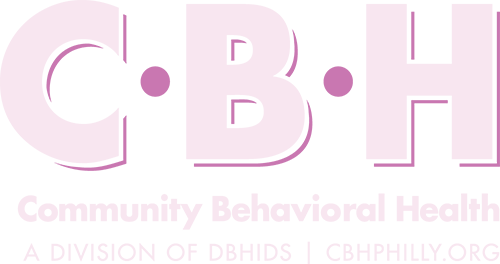Opioid Use Disorder and Medication-Assisted Treatment
Understanding Opioids
Opioids affect nerve cells (neurons) in your brain and body. This group of drugs includes prescriptions such as morphine, codeine (lean), methadone, oxycodone (OxyContin®, Percocet®, “oxys,” “percs”), hydrocodone (Vicodin®, “vikes”), as well as heroin and powerful synthetic opioids such as fentanyl. More information on each of these opioids is available from the Centers for Disease Control. and the Substance Abuse and Mental Health Services Administration.
Opioids tell your brain to block pain signals and can also make you feel relaxed and happy with lower doses. Higher doses can slow breathing and heart rate, which can be fatal, especially in combination with alcohol and benzodiazepines (“benzos”), such as alprazolam (Xanax®, “z-bars”) and clonazepam (Klonopin®, “pin”). The feelings of pleasure that result from taking an opioid can make you want to continue using or become addicted to the effects on your body and mind, despite the risks and harm involved.
Opioid Use Disorder (OUD)
Opioid Use Disorder (OUD) is best understood as a medical and behavioral illness. It may start with limited use of medication or a way to have fun, but the body quickly needs higher doses to get the same effect, and users begin to feel sick or experience withdrawal between doses. Many people caught in this cycle of use and withdrawal need help to change their patterns and manage the disease of addiction safely.
Signs and symptoms of OUD can include:
- Using higher amounts or with greater frequency
- Desire to cut down or guilt about using
- Difficulty cutting down
- Cravings to use
- Problems in your personal or professional life
- Using or buying in dangerous situations
- Increased tolerance (requiring higher amounts of a drug to feel effects)
- Withdrawal symptoms (feeling ill, shaking, confusion, etc.) when use is stopped
- Combining different drugs to increase the effects
Unfortunately, OUD causes harm to individuals and society, such as:
- Poor school and job performance
- Deteriorating relationships with self and others
- Mental health conditions, such as depression and anxiety
- Inter-personal violence
- Survival crime (theft, sex work, assault) and legal problems
- Medical problems including injection infections, fall risks, and harm to the brain
- Overdose emergencies and strained responder networks
- The current epidemic of opioid overdose deaths
The Opioid Epidemic
In 2017, the opioid epidemic in the United States was declared a National Public Health Emergency with over 47,600 reported deaths from opioid-related overdoses—the majority cause of overdose drug deaths continues to represent an emergency. In 2019, for the first time in U.S. history, a person was more likely to die from an accidental opioid overdose than from a motor vehicle crash, according to a National Safety Council analysis. Recent reporting from NYU Langone’s Center for Opioid Epidemiology and Policy shows clearly that contamination of other drugs such as cocaine and methamphetamine with cheap, powerful, synthetic fentanyl is driving this epidemic and hitting Black and African American individuals, families, and communities the hardest.
Treatment for OUD
Just like treatment for other chronic illnesses such as diabetes, high blood pressure, and asthma, a combination of healthy habits and supportive medication can help those with OUD to live healthier, happier lives. Effective treatment, including medication, is available to CBH members but may not always be used. CBH and our network of providers in Philadelphia are committed to wellness—we want everyone to know how to get help and to trust the treatment that has proven most effective in saving lives and supporting long-term recovery.
Treatment can be provided in residential (inpatient) and community-based (outpatient) settings, through group and individual therapy, and ideally with Medication-Assisted Treatment (MAT). Talking to a doctor or care provider about opioid use and medication can be very helpful. Medication for Opioid Use Disorder (MOUD) includes three FDA-approved options:
Additionally, the FDA has approved the overdose-reversal medication naloxone (Narcan®). All CBH members can request this life-saving medication from pharmacies, without needing a prescription.
For more information about how to access help for yourself or someone you love, please see the DBHIDS Treatment Availability Database, the CBH Provider Directory, or contact CBH Member Services.
For Providers, CBH has developed Clinical Practice Guidelines for the Treatment of OUD.
For additional resources, please see the Pennsylvania Department of Health Naloxone Standing Order DOH-001-2023 (Effective 1/17/2023)
Additional Resources
- DBHIDS Information on MAT
- The Partnership to End Addiction website offers helpful information on MAT, and how to start the conversation with a loved one who is using opioids.
- Medication-Assisted Treatment (SAMHSA)
- “The Opioid Crisis and the Black/African American Population: An Urgent Issue” (SAMHSA)
- Preventing, Recognizing, and Preventing Opioid Overdose (SAMHSA)
- Issue Brief: Nation’s drug-related overdose and death epidemic continues to worsen (AMA Advocacy Resource Center)
- NextDistro.org provides advocacy for harm reduction and help with accessing Narcan® and drug testing strips (to detect fentanyl) discretely and securely by mail.
- DBHIDS Bupe Works Campaign
- Opioids: A Breakdown of the Invisible Overdose Crisis in the Black Community






